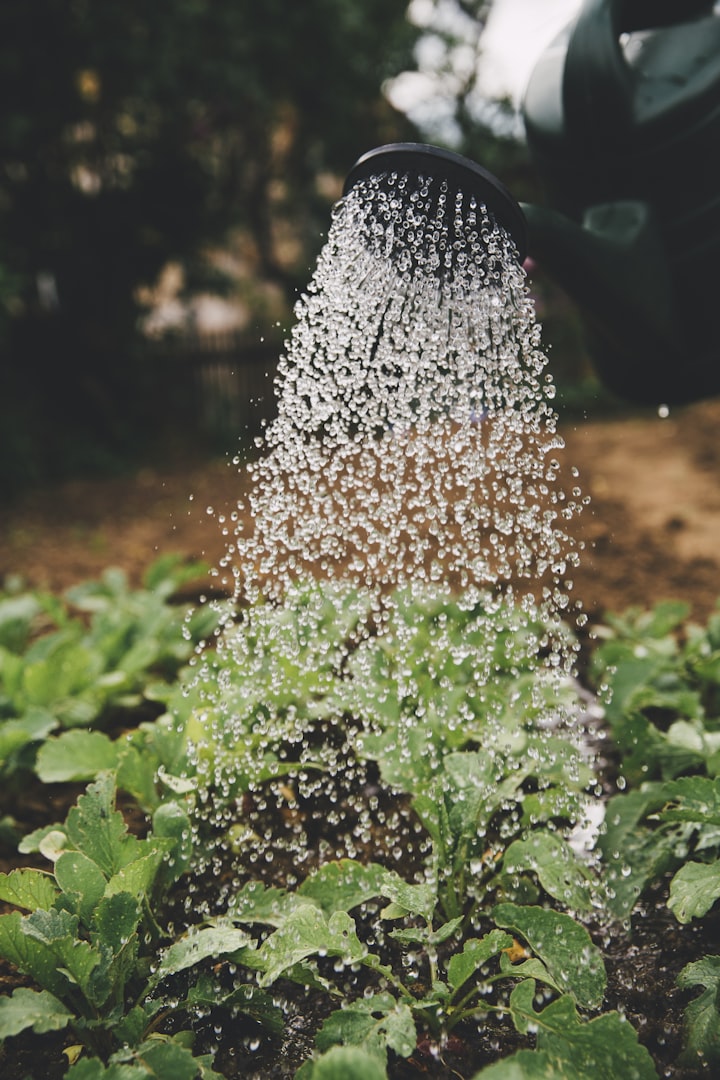Seasons of Change
Follow a gardener through the different seasons

In the quiet neighborhood of Willow brook, Evelyn's garden bloomed with vibrant colors as spring emerged from the grasp of winter. The air was thick with the scent of fresh blossoms, a gentle reminder that life, too, could begin anew. As Evelyn knelt on the soft earth, she couldn't help but draw parallels between her garden's growth and the transformation of her own life.
With each seed she carefully planted, Evelyn embraced the hope of a new chapter. Just as the flowers pushed through the soil, she felt a stirring in her own soul—a desire to break free from the confines of routine and embark on a journey of self-discovery. The garden became a mirror, reflecting her own longing for growth and change.
Summer: Nurturing the Seeds of Passion
Under the scorching sun, Evelyn's garden thrived, its vibrant blooms reaching towards the sky. The beauty surrounding her filled her heart with joy and purpose. As she tended to each plant with care, she realized that just as she nurtured her garden, she needed to nurture her own passions.
Evelyn longed to explore her artistic side, a dream she had set aside for far too long. Inspired by the riotous colors surrounding her, she began to paint. With each stroke of the brush, she unleashed emotions she had buried deep within—fears, joys, and memories. Through her art, she discovered a renewed sense of self-expression and the healing power of creativity.
Autumn: Embracing Change and Letting Go
As the days grew shorter and the leaves transformed into fiery hues, Evelyn felt the weight of time resting upon her shoulders. The garden mirrored her own bittersweet transition, as vibrant petals surrendered to the inevitable passage of seasons.
Evelyn knew she had to confront her fear of letting go. Just as she pruned the withered branches, she recognized the need to shed her own attachments. She combed through the memories tucked away in her heart, releasing the pain of loss and embracing the beauty of cherished moments. The falling leaves whispered a gentle reminder: change was inevitable, but within it lay the seeds of transformation.
Winter: The Quiet Strength of Reflection
As a blanket of snow covered the garden, Evelyn found solace in the stillness of winter. The season invited her to turn inward, to reflect upon the lessons she had learned, and to contemplate the legacy she wished to leave behind.
The garden stood dormant, patiently awaiting the arrival of spring, and Evelyn found comfort in its resilience. She realized that just as the garden thrived through cycles of growth and dormancy, so too had her own life been a tapestry of seasons—filled with joys, sorrows, and the quiet strength that came from weathering storms.
Epilogue: A Tapestry of Seasons
With the arrival of another spring, Evelyn's garden once again burst into bloom, but this time, it held a deeper significance. Each flower was a testament to her own growth, the emotional journey she had undertaken, and the strength she had discovered within herself.
As Evelyn tended to her garden, she knew that the seasons of her life would continue to change, just as the garden would experience cycles of growth and transformation. With renewed purpose and a heart filled with gratitude, she embraced the beauty of life's seasons—their joys, their challenges, and the endless potential for growth and renewal.
Gardening is not only a fulfilling hobby but also carries broader environmental and social implications. Both individuals and governments have a crucial role to play in promoting and practicing responsible gardening. Let's explore the responsibilities of each in fostering a sustainable and thriving gardening culture.
Individual Responsibility:
Environmental Stewardship: Individuals have a responsibility to practice sustainable gardening techniques. This includes using organic fertilizers, conserving water through efficient irrigation methods, and implementing composting practices. By avoiding harmful chemicals and prioritizing eco-friendly practices, individuals can minimize the negative impact on the environment and promote biodiversity.
Plant Selection: Choosing native and drought-resistant plant species is essential for conserving water and maintaining a balanced ecosystem. By selecting plants that are well-suited to the local climate and soil conditions, individuals can reduce the need for excessive watering, fertilization, and pest control, while supporting local wildlife and preserving biodiversity.
Responsible Pest and Weed Management: Individuals should adopt integrated pest management techniques, such as using natural predators or environmentally safe methods to control pests and weeds. This reduces reliance on harmful pesticides, which can have detrimental effects on beneficial insects and the overall ecosystem.
Waste Reduction: Responsible gardening involves minimizing waste and recycling organic materials. Composting garden trimmings and food scraps not only reduces landfill waste but also provides nutrient-rich soil amendments for healthier plants. Additionally, individuals can repurpose and recycle materials used in gardening, such as using rain barrels for water collection or upcycling containers for planters.
Government Responsibility:
Education and Awareness: Governments play a vital role in promoting the benefits and importance of gardening through public education campaigns. These initiatives can raise awareness about sustainable gardening practices, the importance of native plants, and the benefits of urban gardening, fostering a culture of environmental responsibility.
Accessible Green Spaces: Governments should prioritize the creation and maintenance of public gardens and green spaces, ensuring they are accessible to all members of the community. By providing opportunities for individuals to engage in gardening and connect with nature, governments can promote mental well-being, community cohesion, and environmental consciousness.
Regulation and Support: Governments can establish regulations and guidelines for gardening practices to promote sustainability and protect natural resources. This can include regulations on the use of pesticides, water conservation, and invasive species management. Additionally, governments can provide financial incentives, grants, or tax breaks to individuals or communities engaged in sustainable gardening practices or initiatives.
Community Engagement: Governments should encourage community gardening programs and support local initiatives that promote gardening as a means of food security, community building, and environmental sustainability. These programs foster a sense of ownership, collaboration, and shared responsibility within communities, promoting a greener and more resilient society.
By embracing their individual responsibility and collaborating with governments that prioritize sustainable gardening practices, individuals can make a significant impact on environmental conservation, biodiversity, and community well-being. Together, they can create a future where gardening becomes a catalyst for positive change, promoting a healthier planet for generations to come.






Comments
There are no comments for this story
Be the first to respond and start the conversation.